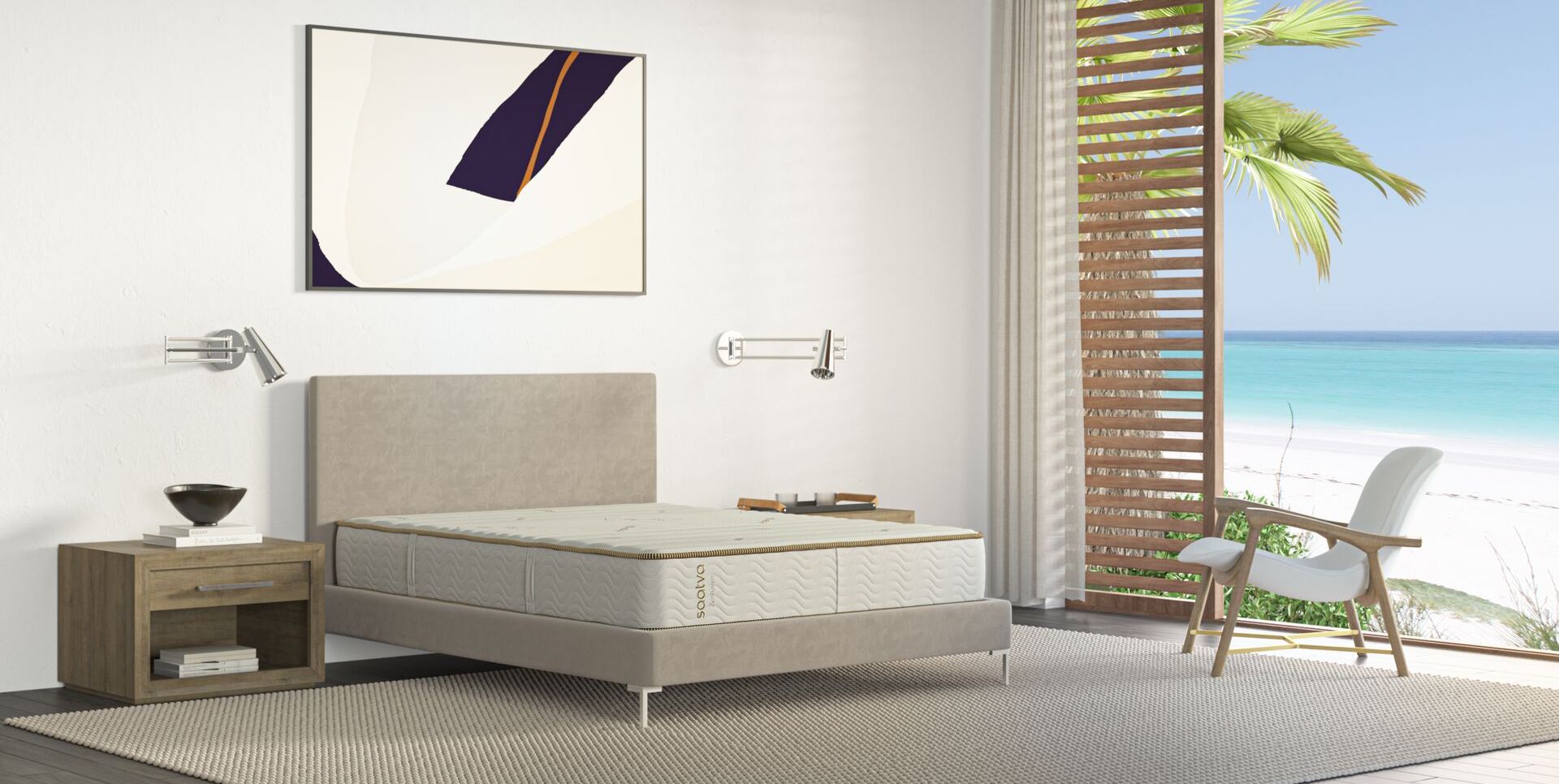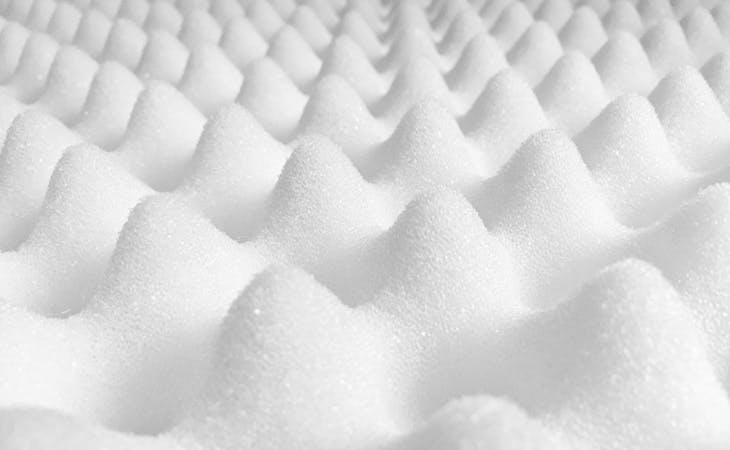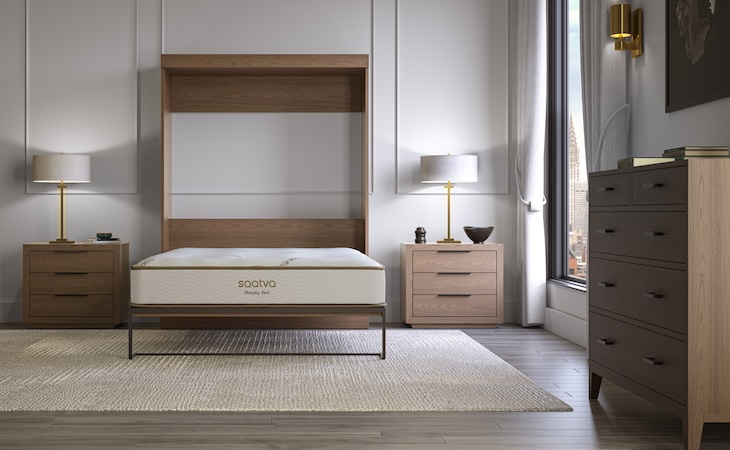Lovers of foam mattresses, rejoice: There are so many options for you to choose from today. The only thing to remember as you start looking for your next perfect foam mattress is that not all types of foam are created equal.
Many offer similar benefits such as resistance to allergens and generally good pressure-relieving abilities. But different types of foam mattresses will have different feels depending on the material they’re made from and the production process.
Below, we’re breaking down the various types of foam you can find in a mattress so you can choose the one that’s right for you.
Types of mattress foams
The most common types of foam used in mattresses today include polyurethane foam, memory foam, convoluted foam, and latex foam. Each type has its benefits and potential drawbacks.
Comparison Polyurethane foam Memory foam Convoluted foam Latex foam What it is Common type of mattress foam made up of compounds derived from petrochemicals Polyurethane foam with added viscosity boosters that give it the ability to conform to your body in response to heat Type of foam, either polyfoam or memory foam, shaped with ridges All-natural foam made from the sap of rubber trees Pros Hypoallergenic Hypoallergenic Alleviates aches and pains Hypoallergenic Cons Prone to off-gassing Traditional memory foam sleeps hot Toppers don’t provide adequate support on their own More expensive than other types of foam Who it’s best for People on a budget People who like the feeling of being “hugged” by their mattress People who need a temporary solution for back pain People who want an eco-friendly, durable mattress
Polyurethane foam
What it is: Polyurethane foam, also called polyfoam or poly, is the most common and least expensive type of foam you’ll find in a mattress. It’s mostly made up of compounds that come from petrochemicals.
Polyfoam has been used as an uppermost layer in innerspring mattresses since the 1950s and remains a popular choice for comfort layers of many mattresses to this day. There are also many mattresses constructed entirely of polyfoam.
Pros: Like other types of foam, polyfoam is good at keeping allergens away and is generally good at promoting spinal alignment. It’s the most affordable type of foam and therefore may appeal to people on a tight budget who want to experience the benefits of foam.
Cons: It’s worth noting that with polyfoam, you get what you pay for. Some common complaints about polyfoam include excessive off-gassing and the tendency to develop body impressions over time. Polyfoam might feel right from the start but tends to lack durability.
Who it’s best for: In short, polyfoam mattresses are generally a good choice for people on a tight budget or those planning to replace a mattress in a few years. However, if you want your mattress to last for many years, you’re better off going with another type of foam.
Memory foam
What it is: Memory foam (also called viscoelastic foam) was first developed by NASA in the 1960s to improve the safety of aircraft cushions. It was introduced into the mattress industry in the 1990s.
Memory foam is made the same way as polyfoam, with the edition of viscosity boosters—chemicals that give it the ability to “melt” and conform closely to body contours when in contact with body heat.
Within the memory foam category are a few variations:
Open cell memory foam is made the same way as traditional memory foam but has internal pockets that allow for better air circulation throughout the mattress, decreasing its heat retention properties.
Gel memory foam is a type of memory foam in which gel beads have been incorporated into the foam structure. The gel absorbs body heat as well as creates an open cell structure, improving airflow and breathability.
Instead of gel, memory foam can be infused with other elements to improve its temperature-regulating abilities. For example, today there are mattresses made with copper- and graphite-infused memory foam. Copper and graphite are known to absorb heat and keep it away from your body, helping you to sleep cool.
Pros: Memory form is hypoallergenic and is great at relieving pressure points, promoting proper spinal alignment, and limiting motion transfer.
Cons: Traditional memory foam tends to sleep hot. That said, in recent years manufacturers have developed several new types of memory foam to help with this.
Who it’s best for: A

The most luxurious memory foam with adaptive cooling & body-hugging support
is ideal for people who need to sleep on a surface that promotes proper spinal alignment and prefer the feeling of being “hugged” by their mattress rather than a bouncier feel.
Convoluted foam
What it is: Convoluted foam (also known as egg-crate foam) refers to a type of foam shaped with ridges to help alleviate aches and pains. Convoluted foam can be made of polyfoam or memory foam and is most often used in mattress toppers.
Pros: Convoluted foam toppers are usually inexpensive and can be beneficial if your mattress alone does not provide sufficient pressure relief.
Cons: Convoluted foam toppers typically don’t provide enough support on their own and need a firm mattress underneath to compensate for that. Another potential drawback of convoluted foam is off-gassing, especially if it’s made of polyfoam. Plus, because of its uneven surface, it can be difficult to clean. Durability can also be a problem: A convoluted foam topper will typically last for three years or less.
Who it’s best for: Convoluted foam is a good choice for someone who needs a temporary solution for back pain or other aches that interfere with sleep.
Latex foam
What it is: Latex foam is made from the sap of rubber trees. It’s an all-natural material that has the same hypoallergenic and pressure-relieving properties as memory foam but offers a more responsive feel.
There are two different types of latex foam used in mattresses: Dunlop latex and Talalay latex. These refer to two different methods of turning liquid latex into foam. In both cases, the liquid sap of the rubber tree is sustainably harvested and sent to a production facility where it’s mixed with a small amount of non-toxic, inorganic ingredients and whipped into an airy batter. Both methods produce excellent sleeping surfaces.
Pros: Natural latex foam is eco-friendly, making it a greener alternative to conventional foams. It’s sustainable, non-toxic, biodegradable, and durable. Because it’s hypoallergenic, latex foam is also a good option for people with allergies. And because latex foam has a more open cell structure than other types of foam, it allows for more airflow and cooler sleep.
Cons: Due to the cost of harvesting and processing the material, a mattress made out of latex foam is more expensive than other foam mattresses. It’s also heavier than other foams, which can make moving difficult.
Who it’s best for: A

Our dual-sided organic natural latex mattress for buoyant, pressure-relieving comfort
is a solid choice if you want an eco-friendly mattress that feels conforming yet responsive. It’ll help alleviate back pain, promote cool sleep, and last you for many years.
Want to learn more about types of foam? Check out our memory foam mattress guide and our latex mattress guide next.





